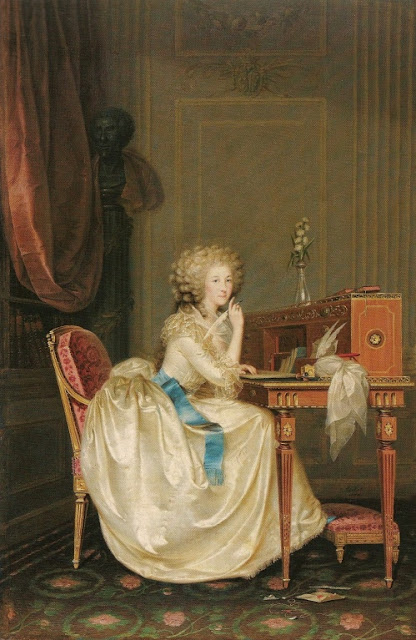Good Mourning
Micah and I went to a cool exhibit at the Metropolitan Museum of Art last weekend. Cool as a crypt, in fact. Death Becomes Her: A Century of Mourning Attire explored the 18th and 19th century custom of mourning as expressed through clothing and jewelry. I want to bring mourning clothes back. (Unlike Justin Timberlake who just wants to bring Sexy back.)
This Elle magazine review describes the exhibit much better than I could, thanks to the talent of journalist, Rebecca Moss. I liked her article, so I googled her. Reminds me of a way more put together Bridget Jones.
Pale mannequins draped in dark shades that seemed to float through the room, though they were motionless...
... as Gabriel Fauré's Requiem set the tone. There seemed to be a swirling, foggy mist, though there wasn't.
“Black is becoming; and young widows, fair, plump, and smiling, with their roguish eyes sparkling under their black veils are very seducing,” Robert De Valcourt, The Illustrated Manners Book: A Manual of Good Behavior and Polite Accomplishments.

This Elle magazine review describes the exhibit much better than I could, thanks to the talent of journalist, Rebecca Moss. I liked her article, so I googled her. Reminds me of a way more put together Bridget Jones.
Pale mannequins draped in dark shades that seemed to float through the room, though they were motionless...
... as Gabriel Fauré's Requiem set the tone. There seemed to be a swirling, foggy mist, though there wasn't.
Hair of the deceased worn as jewelry
Quotes on the subjects of death and mourning, projected onto the walls, faded in and out, ghostlike. Among them...

Framed illustrations from the turn of the century (not the last one... the one in 1901) Life magazine series traced the path of a young widow as she transitioned from married woman to available woman. You can enjoy the illustrations at this website. I don't know how accurate is the image of the grieving woman as alluring and the other women as suspicious and resentful. 19th century perspective, male perspective, both/neither, accurate/inaccurate? In the last installment, she decides to join a convent where even the clergymen lurk in the background, eyeing her. I bought a first edition of the Life book that contains the series, on Ebay, for Micah, as a remembrance of our day at the museum. It's a big book - 18" x 12" or so.
Marie Antoinette's final order from her favorite dressmaker, Rose Bertin, was for black mourning clothes when Louis XVI was executed. The authorities denied her the right to wear them for her transport to her own execution though she felt somewhat comforted that the white she was told to wear was the original mourning color for Queens of France.
Pictured: praying at Conciergerie, awaiting trial, under guard, wearing mourning
Marie Antoinette's mother wore mourning for her husband (Francis I)
from the time of his death until her own fifteen years later.










Comments